Abstract
Data on Natsumikan farming in Japan shows that in 2006 the national harvest volume was the highest at 58.1kt, the fruiting tree area was 3.35kha, and the shipping volume was highest in Kumamoto at 11.1kt. Considering the trends and characteristics inferred from these figures, it is suggested that Natsumikan production is thriving throughout the country, with Kumamoto in particular emerging as one of its centers. Furthermore, a comparison of the fruiting tree area and shipping volume suggests that efficient production management is likely being implemented, resulting in a high shipping volume. Natsumikan is one of Japan’s representative agricultural products, and it can be said that this is an area in which further growth is expected, such as increased production and improved quality control.
Natsumikan harvest volume (main data).
Japan’s natsumikan harvest reached a record peak of 379kt in 1973, but has been declining since then. The current yield is down to 15.4% of its peak. There are several possible factors behind this decline. First, urbanization and industrial development have led to a decrease in agricultural land, resulting in a reduction in the area under cultivation. Additionally, the aging population and shortage of agricultural labor are also contributing to the decline in Natsumikan cultivation. In addition, climate change and advances in agricultural technology leading to a shift to other crops are also thought to be factors. However, as natsumikan is one of Japan’s representative agricultural products and demand remains high, there is hope that improvements in agricultural policies and technology will lead to a sustainable recovery in production.
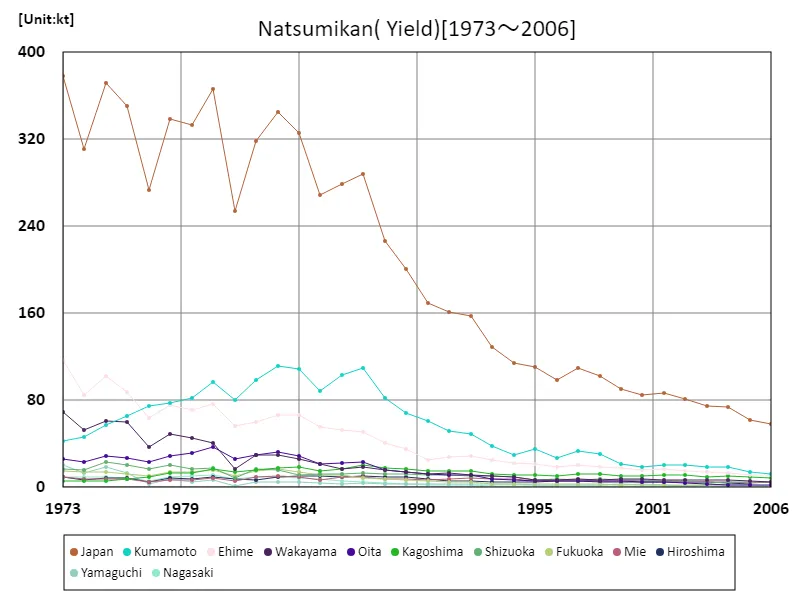

The maximum is 379kt[1973] of Japan, and the current value is about 15.4%
Natsumikan harvest volume (by prefecture).
The latest data on Natsumikan harvest volumes in Japanese agriculture is from 2006, and is recorded by prefecture. At this point, the largest harvest was recorded in Kumamoto, at 12.6kt. This is the highest recorded result compared to historical data, indicating that the current harvest is the highest on record. You can see that Kumamoto’s natsumikan production stands out from other regions. Considering these characteristics, it is possible that Kumamoto’s climate and soil conditions are very suitable for growing Natsumikan. It is also believed that the high level of agricultural technology and cultivation management in Kumamoto also contributes to the high yields. Additionally, local agricultural policies and support systems may also be contributing to the increase in Natsumikan production. On the other hand, the harvest yields in other regions are lower than Kumamoto, suggesting that there are differences in cultivation environments and production systems between regions. This may be due to differences in regional climate and soil conditions, as well as differences in farm management styles and market demands. In general, the yield of Natsumikan varies by region, and while Kumamoto boasts the largest yield, other regions also produce Natsumikan using their own characteristics and efforts. It is expected that effective production management and technological innovation that take advantage of the characteristics of each region will continue to contribute to increasing natsumikan harvest yields.
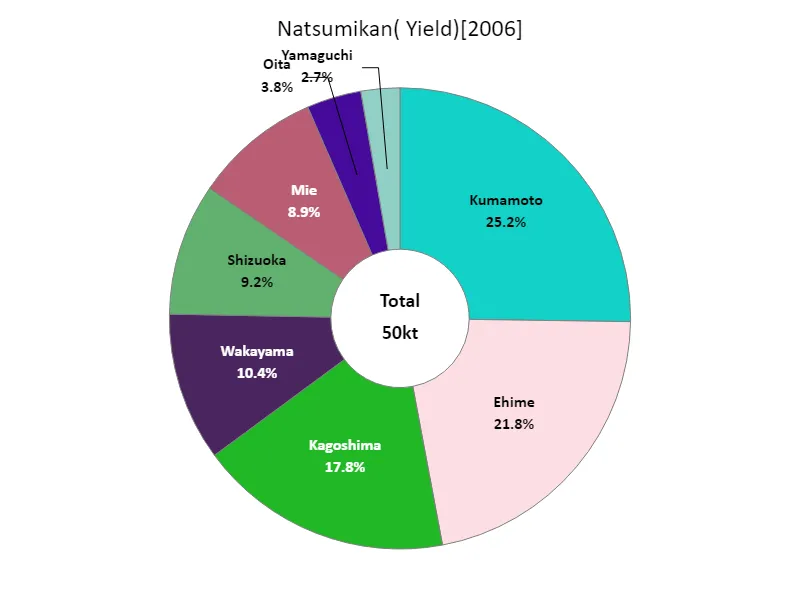

The maximum is 12.6kt of Kumamoto, the average is 6.24kt, and the total is 50kt
Area of bearing trees of summer mandarins (main data).
Looking at data on the area of bearing trees for Japanese natsumikan mandarins, the nationwide area hit a record peak of 15.1 kha in 1974, but has been declining since then. The current fruiting tree area has declined to 22.2% of its peak. There are several possible factors behind this decline. First, with increasing urbanization and industrialization, the area of fruiting trees may be decreasing due to the conversion of agricultural land to urban and industrial use. Another factor is that the decline in the agricultural workforce and its aging population are making it difficult to secure the labor force needed to cultivate Natsumikan oranges. Furthermore, climate change and natural disasters may make cultivation difficult in some areas. On the other hand, it is also possible that productivity per unit area has increased due to advances in agricultural technology and increased efficiency. Furthermore, new cultivation techniques and improved varieties may make it possible to grow Natsumikan more efficiently. Overall, the decline in the area of fruiting trees of summer mandarins is likely due to multiple factors, and the situation may vary from region to region. Going forward, a review of agricultural policies, technological innovation, and securing the labor force will likely be important factors in achieving a sustainable recovery of the area of fruiting natsumikan trees.
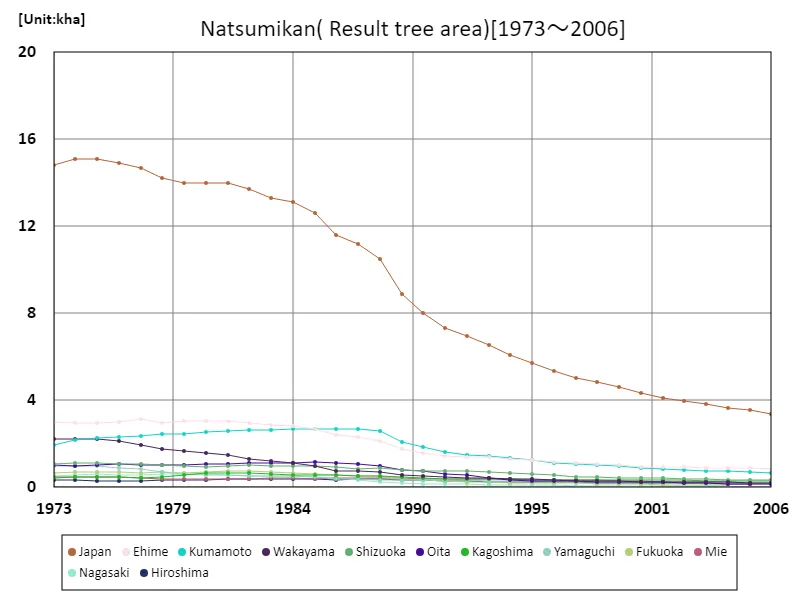

The maximum is 15.1kha[1974] of Japan, and the current value is about 22.2%
Area of bearing Natsumikan trees (by prefecture).
The area of fruiting trees of Natsumikan mandarin oranges in Japanese agriculture was surveyed by prefecture using the latest data from 2006. At this point, the largest bearing tree area was recorded in Ehime Prefecture, at 826 hectares. This figure is the highest when compared with historical data, indicating that the current bearing tree area is the highest on record. Ehime Prefecture has the largest area of fruiting trees for natsumikan, which may make it a very suitable region for cultivating natsumikan. It is believed that the increase in the area of fruiting trees is due to suitable climate and soil conditions for cultivation, as well as the high level of farmers’ skills and management. On the other hand, the fruiting tree area in other regions is lower than that in Ehime Prefecture, suggesting that there are differences in cultivation environments and production systems from region to region. This may be due to differences in climate and soil conditions, as well as differences in farm management styles and market demands. In general, the area of fruiting trees for Natsumikan varies by region, but while Ehime Prefecture boasts the largest area of fruiting trees, other regions also appear to be producing fruit based on their own characteristics and efforts. It is expected that effective production management and technological innovation that take advantage of the characteristics of each region will continue to contribute to increasing the area of fruiting trees for natsumikan.
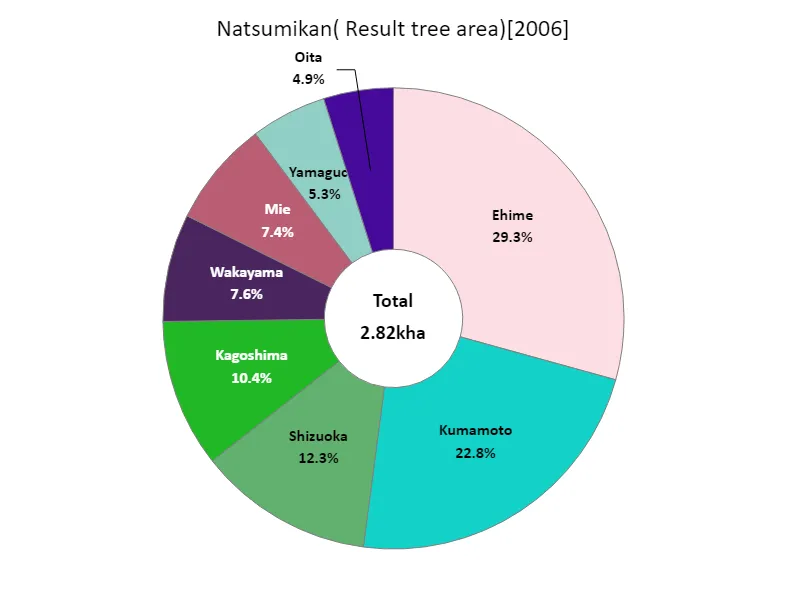

The maximum is 826ha of Ehime, the average is 353ha, and the total is 2.82kha
Shipping volume of summer mandarins.
The shipping volume of Natsumikan in Japan’s agricultural sector was examined using the latest data from 2006. At this point, the largest shipment was from Kumamoto, at 11.1kt. Additionally, the overall average shipping volume was 5.5kt, with total shipping volume reaching 44kt. This data shows that Kumamoto has the largest share of Natsumikan shipping volume. This suggests that Kumamoto is one of the major production areas of Natsumikan and that high productivity is achieved through excellent cultivation conditions and agricultural techniques. Natsumikan oranges are also produced in areas other than Kumamoto, indicating that there is demand for them nationwide. On the other hand, the average shipping volume of 5.5kt shows that shipping volumes vary by region. This may be due to differences in climatic conditions, soil, and farm management styles. In addition, the efforts and management strategies of individual farmers and producers will also affect shipping volumes. In general, the shipping volume of Natsumikan varies by region, with Kumamoto boasting the largest volume, while other regions also produce it using their own characteristics and efforts. It is expected that effective production management that takes advantage of the characteristics of each region and improvements in agricultural policies will continue to contribute to a sustainable increase in Natsumikan shipping volumes.
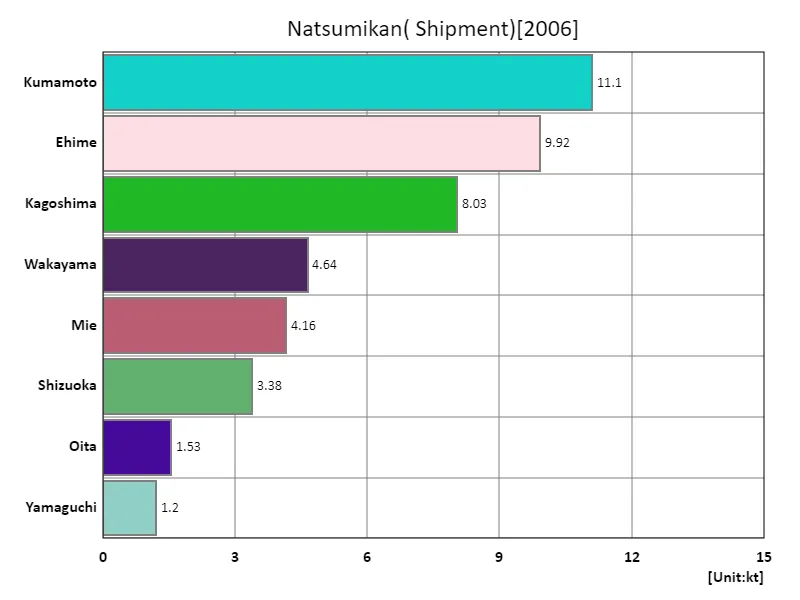

The maximum is 11.1kt of Kumamoto, the average is 5.5kt, and the total is 44kt
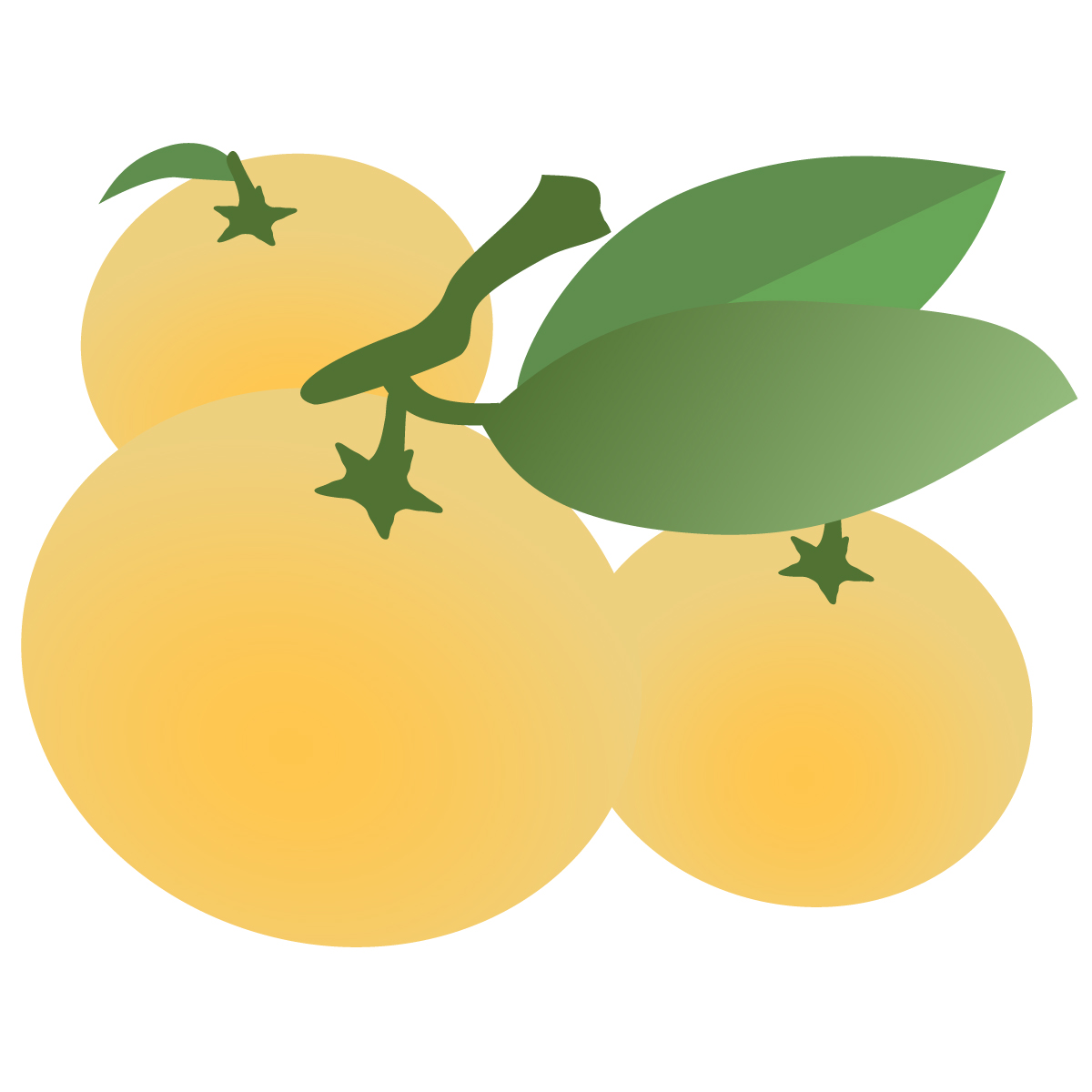


Comments